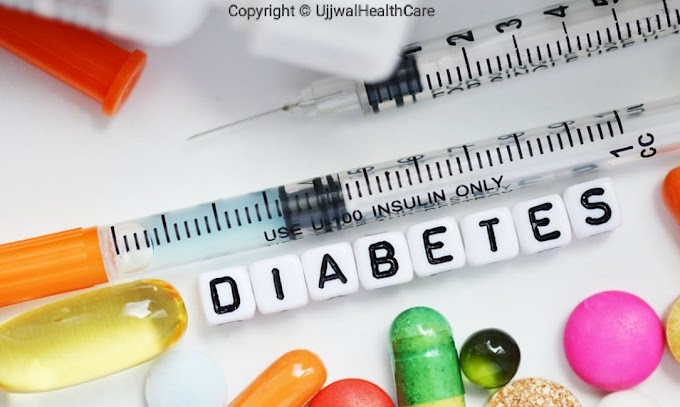" Fainting - syncope "
✓ Understand Fainting :
- Fainting happens when you lose consciousness for a short amount of time interval because your brain isn’t getting enough oxygen properly during that time.
- The medical term for fainting is syncope, but it’s more commonly known as “passing out.” A fainting spell generally lasts from a few seconds to a few minutes.
- Feeling lightheaded, dizzy, weak, or nauseous sometimes happens before you faint.
- Some people become aware that noises are fading away, or they describe the sensation as “blacking out” or “whiting out.”
- A full recovery usually takes a few minutes. If there’s no underlying medical condition causing you to faint, you may not need any treatment.
- Fainting isn’t usually a cause for concern, but it can sometimes be a symptom of a serious medical problem. If you have no previous history of fainting and you’ve fainted more than once in the past month, you should talk to your doctor.
✓ Causes of Fainting :
In many cases, the cause of fainting is unclear.
* Fainting can be triggered by a number of factors, including:
- fear or other emotional trauma
- severe pain
- a sudden drop in blood pressure
- low blood sugar due to diabetes
- hyperventilation
- dehydration
- standing in one position for too long
- standing up too quickly
- physical exertion in hot temperatures
- coughing too hard
- straining during a bowel movement
- consuming drugs or alcohol
- seizures
Medications that can cause your blood pressure to drop also increase your chance of fainting.
These include certain medications used to treat:
- high blood pressure
- allergies
- depression
- anxiety
If turning your head to one side causes you to faint, it’s possible that the sensors in the blood vessel in your neck are extra sensitive. This sensitivity can cause you to faint.
You’re also more likely to faint if you have any of these conditions:
- diabetes
- heart disease
- atherosclerosis
- an irregular heartbeat, or arrhythmia
- anxiety or panic attacks
- chronic lung disease, such as emphysema
✓ Types of Fainting :
There are several types of syncope. Three common types include:
- Vasovagal syncope. Vasovagal syncope involves the vagus nerve. It can be triggered by emotional trauma, stress, the sight of blood, or standing for a long period of time.
- Carotid sinus syncope. This type happens when the carotid artery in the neck is constricted, usually after turning your head to one side or wearing a collar that’s too tight.
- Situational syncope. This type occurs due to straining while coughing, urinating, moving your bowels, or having gastrointestinal problems.
* Yoga For Fainting :
Here's a benefit of yoga we bet you didn't see coming! According to a novel study from India, guided yoga is more effective than conventional treatment for preventing fainting in repeat sufferers.
Guided yoga therapy is also more beneficial in terms of quality of life than the standard treatment. The findings of the study were published today in EP Europace, a journal of the European Society of Cardiology (ESC).
Says study author Professor Jayaprakash Shenthar of the Sri Jayadeva Institute of Cardiovascular Sciences and Research, Bengaluru:
Repeated fainting gives rise to mental stress, anxiety, depression, and a constant dread of the next episode.
"Quality of life is negatively affected due to the unpredictability. Besides, some countries do not allow patients to drive."
Fainting or "vasovagal syncope" is a brief loss of consciousness caused by reduced blood flow to the brain. It can be triggered by prolonged standing, fear, pain, seeing blood, and hot, humid environments. It is estimated that approximately half of the general population will have one syncopal event during their lifetime.
Recommendations to prevent fainting include keeping hydrated, avoiding hot crowded environments, tensing the muscles, and lying down. "Unfortunately, most strategies have only modest benefits, which proves frustrating for patients," said Professor Shenthar.
How can yoga help with fainting?
This was the first randomised study to examine guided yoga as a treatment for patients with vasovagal syncope. The study enrolled 100 patients with at least 3 episodes of fainting in the previous year. None of the patients was receiving treatment for it, and none were practising yoga at the time of enrolment.
Participants were randomly allocated to the yoga or conventional treatment group. The conventional treatment group was advised to consume 6 to 9 grams of salt and more than 3 litres of water every day and perform physical counter-pressure manoeuvres such as crossing legs and tensing thigh and buttock muscles when warning signs of syncope occurred.
Not just stress management and fitness, yoga can also help you with fainting spells.
The yoga group was not given any specific advice regarding salt, fluid, or physical counter-pressure manoeuvres. Instead, they attended 5 to 7 sessions in which a certified yoga instructor showed them how to perform a 60-minute yoga module. The yoga module consisted of pranayama (breathing), asanas (postures), and dhyana (meditation). Participants were then advised to perform yoga for 60 minutes at least 5 days per week for the subsequent 12 months.
Participants were asked to record the number of fainting episodes during follow-up. Quality of life was assessed at baseline, 3, 6, and 12 months using the syncope functional status questionnaire-it asks how syncope affects daily activities such as driving, shopping, exercise, and relationships with family and friends and asks respondents to rate their fear/worry on a scale of 1 to 8.
The mean age of participants was 33 years, and more than half were women. Prior to the study, the average duration of syncopal episodes was 17 months, during which patients had an average of 6.4 blackouts. Compared to the conventional treatment arm, the yoga group had fewer blackouts and better quality of life scores at 3, 6, and 12 months. The standard treatment group reported 3.8 fainting episodes during 12 months of follow-up, while the yoga group reported 1.1 episodes.
Professor Shenthar said: "The benefits of guided yoga were apparent as early as three months after treatment initiation and were sustained at six and twelve months. Preliminary evidence suggests that the breathing and meditation aspects of yoga have a positive effect on the autonomic system3 while 'asanas' improve vascular tone - both of which could prevent gravitational pooling of blood in the lower parts of the body."
What to do when someone faints ?
- When someone near you faints, you can encourage blood flow to their head by raising their feet above the level of their heart.
- Alternatively, you can have them sit with their head between their knees.
- Loosen tight collars, belts, and other restrictive clothing. Keep the person lying down or sitting for at least 10 to 15 minutes. A cool, quiet place is best.
- A cool drink of water may also help. Learn more about first aid tips for unconsciousness.
When is fainting an emergency?
You should call 911 or your local emergency services immediately if someone has fainted and:
- isn’t breathing
- doesn’t regain consciousness within a few minutes
- has fallen and sustained an injury or is bleeding
- is pregnant
- has diabetes
- has no history of fainting and is over age 50
- has an irregular heartbeat
- has complained of chest pain or pressure, or has a history of heart disease
- has convulsions or has injured their tongue
- has lost bowel or bladder control
- has difficulty with speech or vision
- remains confused or disoriented
- is unable to move their limbs
Follow the instructions of the 911 operator or emergency dispatcher. You may need to perform rescue breathing or CPR while awaiting help.
Tests and diagnosis of Fainting
If you have no prior history of fainting and have fainted multiple times, your doctor will want to determine if an underlying medical condition is the cause.
- Even people who only pass out once should at least get an electrocardiogram (ECG or EKG), which records the electrical activity of your heart.
- Tell your doctor about the specific circumstances of your fainting spell, such as what you were doing and how you felt immediately before fainting.
- Be prepared to give your doctor a complete medical history, including information about previously diagnosed conditions and any prescription and over-the-counter (OTC) medications you take.
- Depending on the findings from a physical examination, your doctor may order additional tests.
Diagnosis typically starts with EKG. Other tests that may be used to find out why you passed out include:
✓ Holter monitor. This is a portable heart-monitoring device that you wear for at least 24 hours.
✓ Echocardiogram. This test uses sound waves to produce a moving picture of your heart.
✓ Electroencephalogram. The electroencephalogram (EEG) measures the electrical activity of your brain. After listening to a description of your symptoms, your doctor will usually be able to tell whether you fainted or had a seizure. They’ll perform the EEG if they’re unsure.
How dangerous is fainting?
* Up to 50 percent of the population will faint at some time in their life, said Corcoran.
* This can be intermittent and temporary as in the case of vasovagal syncope or due to blood pressure regulation problems as is the case with 70 percent of people who faint.
* “Fainting due to a blood pressure regulation problem can be serious if the person faints in a dangerous situation, like while driving or if they fall and injure themselves. But the condition itself is not life-threatening,” Corcoran said.
* Fainting is serious in about 10 to 15 percent of cases that are due to heart conditions, such as abnormal fast or slow heart rhythms or conditions that obstruct the flow of blood from the heart (e.g., aortic stenosis and hypertrophic cardiomyopathy).
* Cause for concern is fainting that occurs during exercise or when lying down, or in those with a known personal or family history of heart disease.

















